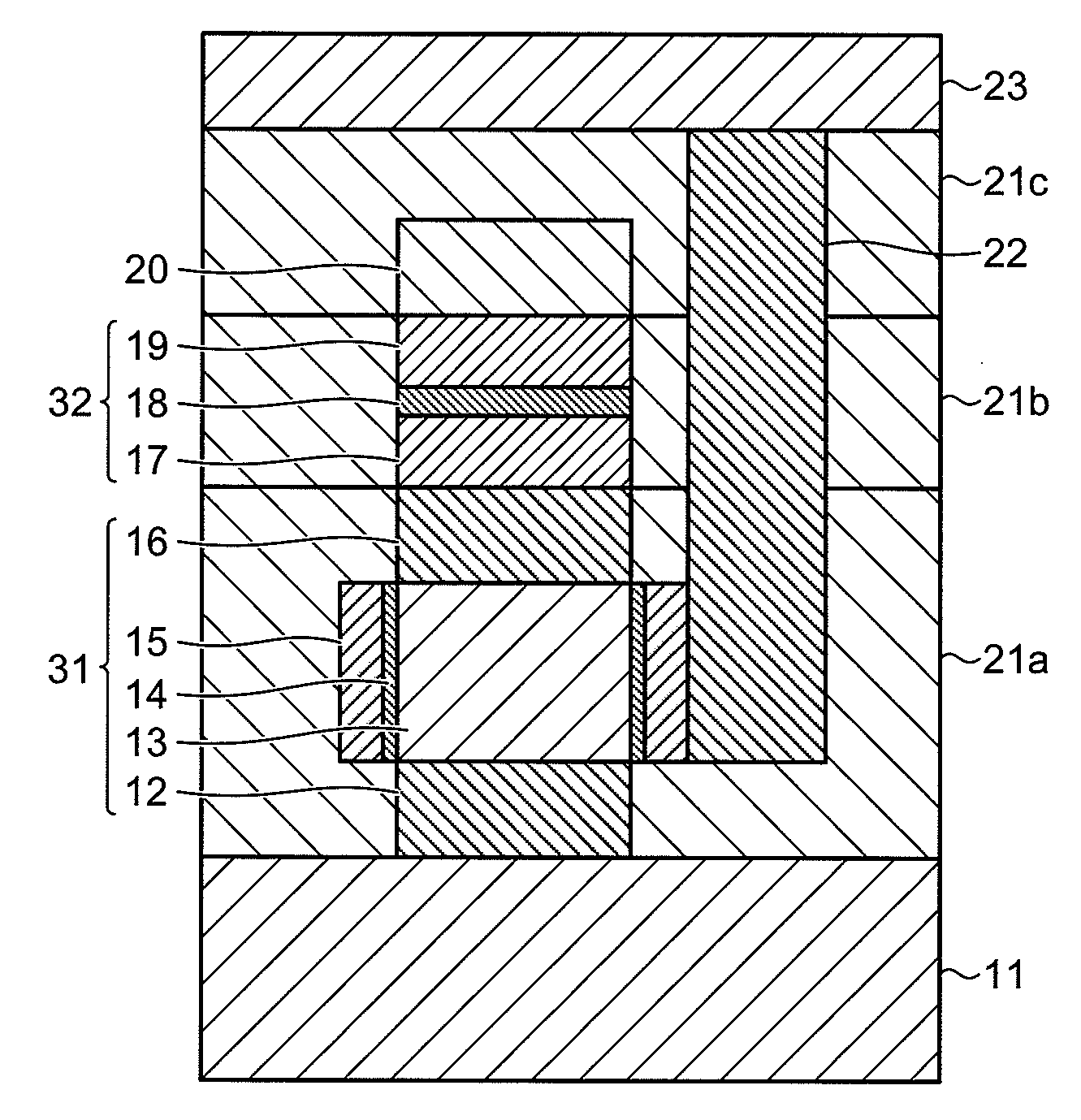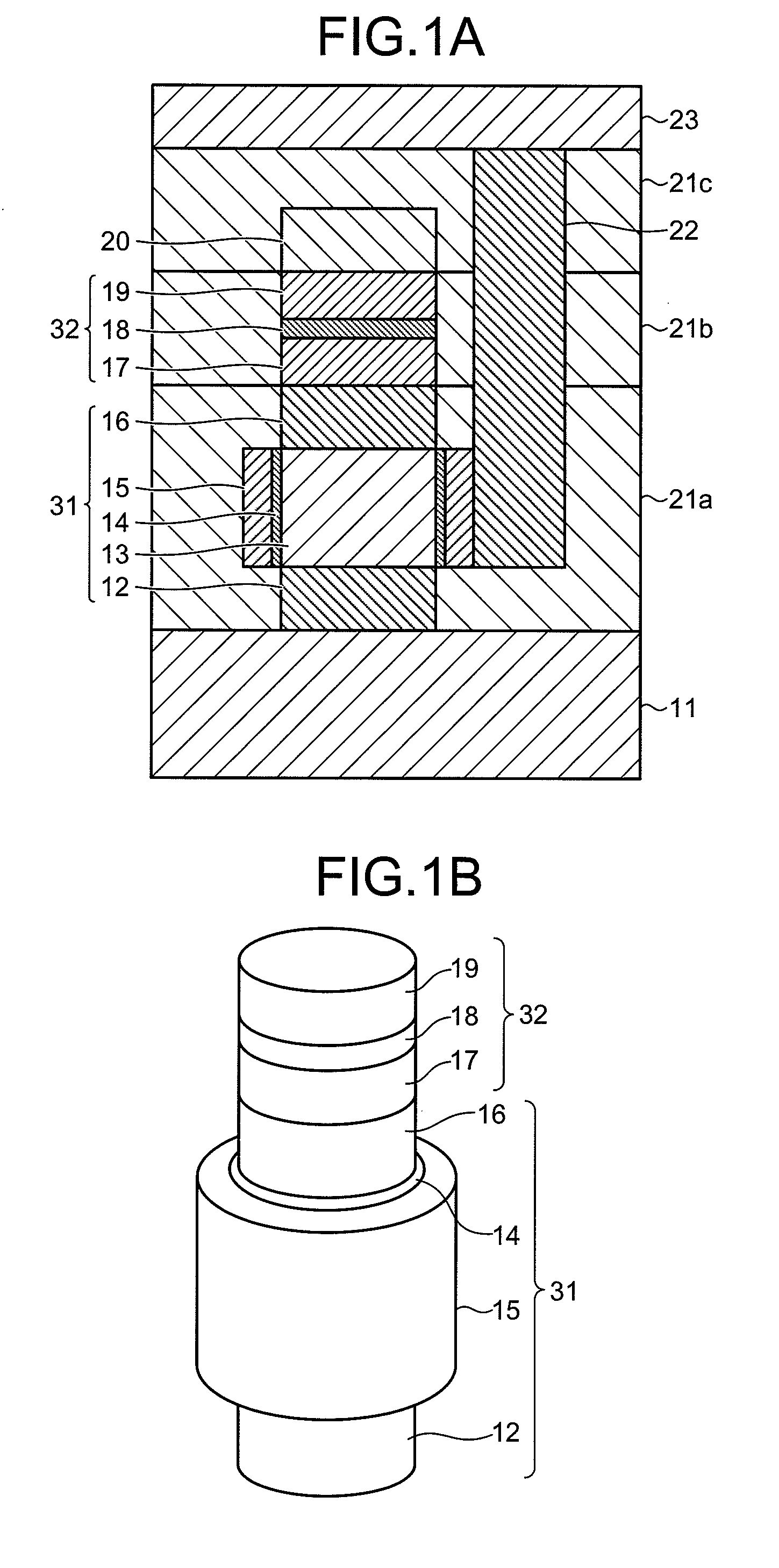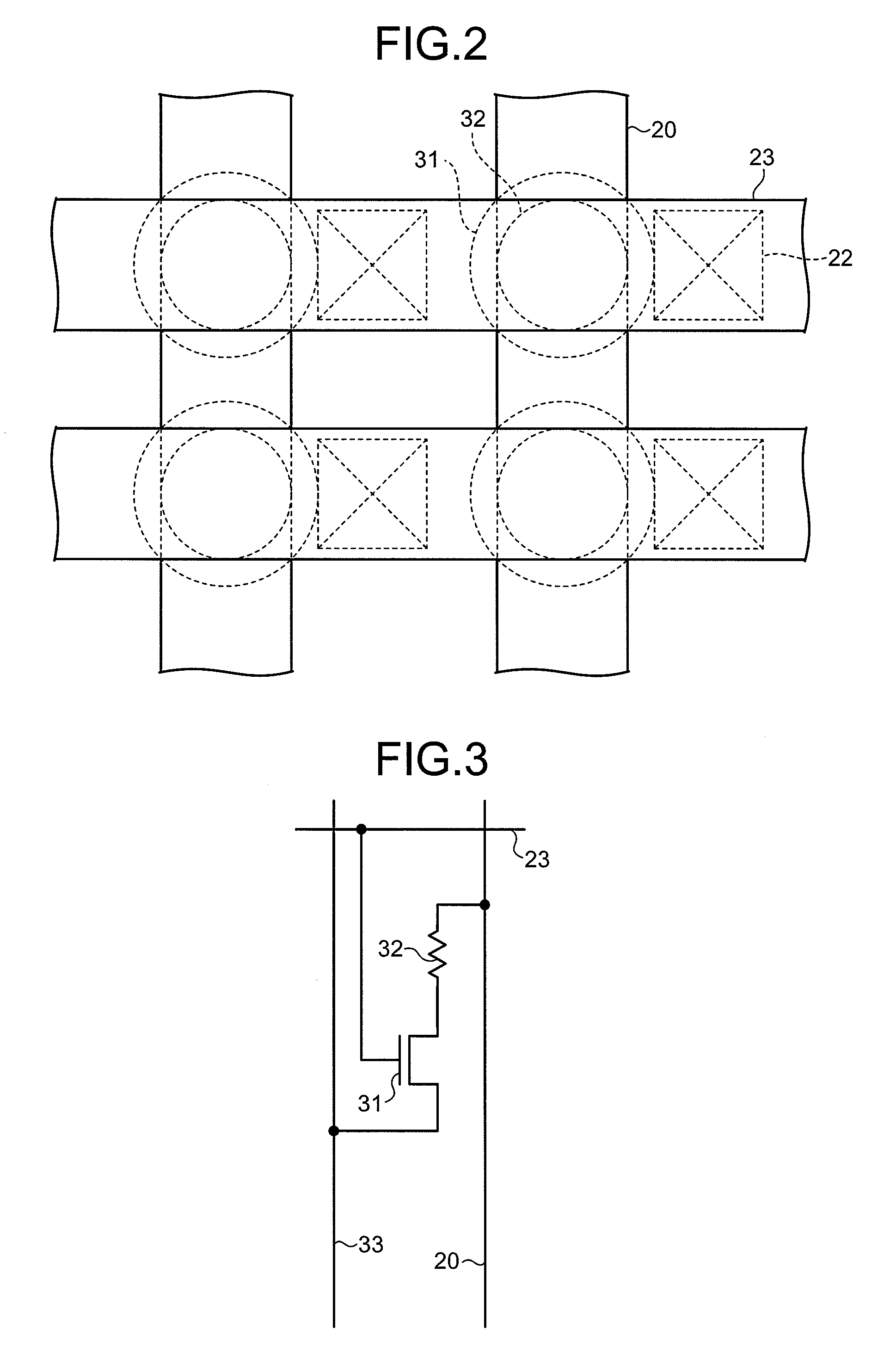Semiconductor memory device and manufacturing method for semiconductor memory device
a semiconductor memory and memory device technology, applied in semiconductor devices, digital storage, instruments, etc., can solve the problems of increasing the risk of malfunction, and increasing the magnetic interference between memory cells
- Summary
- Abstract
- Description
- Claims
- Application Information
AI Technical Summary
Problems solved by technology
Method used
Image
Examples
first embodiment
[0053]In the first embodiment, the configuration including the magnetic layer 17, the nonmagnetic layer 18, and the magnetic layer 19 has been explained as the spin-injection magnetization-reversal element 32. The spin-injection magnetization-reversal element 32 can have other configurations. For example, upper and lower electrodes can be placed on and underneath the spin-injection magnetization-reversal element 32. An antiferromagnetic layer can be provided to fix magnetization of the magnetic fixed layer. A double pin configuration can be used as well as a single pin configuration.
[0054]Configurations of the spin-injection magnetization-reversal element 32 other than that shown in FIG. 1A are explained in second and third embodiments of the present invention.
second embodiment
[0055]FIGS. 5A and 5B are cross-sectional views of a schematic configuration of a spin-injection magnetization-reversal element according to the
[0056]In FIGS. 5A and 5B, a spin filter layer 42, a magnetization free layer 43, a nonmagnetic layer 44, a magnetization fixed layer 45, and an antiferromagnetic layer 46 are successively deposited on a magnetization fixed layer 41. For example, it is possible to use CoFe as materials for the magnetization fixed layers 41 and 45 and the magnetization free layer 43, Ru as a material for the spin filter layer 42, Cu as a material for the nonmagnetic layer 44, and IrMn as a material for the antiferromagnetic layer 46.
[0057]When a current I− vertically flows through the magnetization fixed layer 41, the spin filter layer 42, the magnetization free layer 43, the nonmagnetic layer 44, the magnetization fixed layer 45, and the antiferromagnetic layer 46, electrons e having up spin are injected from the magnetization fixed layer 45 to the magnetizat...
third embodiment
[0060]FIG. 6 is a cross-sectional view of a schematic configuration of a spin-injection magnetization-reversal element according to the
[0061]In FIG. 6, a vertical-magnetization pinning layer 52, an interface magnetic layer 53, a tunnel film 54, an interface magnetic layer 55, and a vertical-magnetization free layer 56 are successively deposited on an electrode 51. It is possible to use CoFeB as materials for the interface magnetic layers 53 and 55, and MgO as a material for the tunnel film 54, for example.
[0062]When a vertical magnetic film is used for the magnetization fixed layer and the magnetization free layer in the spin-injection magnetization-reversal element, the spin-injection magnetization-reversal element can be brought less subject to a diamagnetic field as compared to an in-plane magnetization method. Accordingly, an energy level during the magnetization reversal can be lowered and a write current can be reduced.
[0063]FIG. 7 is a cross-sectional view of a schematic conf...
PUM
 Login to View More
Login to View More Abstract
Description
Claims
Application Information
 Login to View More
Login to View More - R&D
- Intellectual Property
- Life Sciences
- Materials
- Tech Scout
- Unparalleled Data Quality
- Higher Quality Content
- 60% Fewer Hallucinations
Browse by: Latest US Patents, China's latest patents, Technical Efficacy Thesaurus, Application Domain, Technology Topic, Popular Technical Reports.
© 2025 PatSnap. All rights reserved.Legal|Privacy policy|Modern Slavery Act Transparency Statement|Sitemap|About US| Contact US: help@patsnap.com



